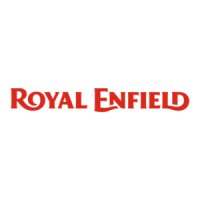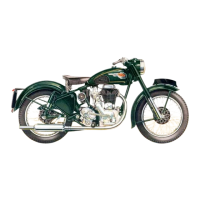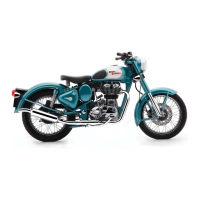"CRUSADER
250," "250
CLIPPER"
AND
"CRUSADER
SPORTS"
new seats to be eut. Excessive grinding forms a pocket
which restricts the flow of the gases.
Do not interchange the inlet and exhaust valves.
27
Reassembly
of
Engine after Decarbonising. When
reassembling the engine take great care to have all parts
perfectly clean and
put
clean oil on the piston, particu-
larly round the rings. The cylinder base joint must
be
made with a paper washer, the cylinder head joint with
a new copper and asbestos gasket. When replacing the
push rods, note that the longer of the two
is
the inlet
rod and it should pass through the outer of the two holes
in the base of the cylinder barrel. When tightening down
the cylinder head nuts, work diagonally from one to
another to ensure pulling the joint down level.
Before setting the valve clearances see that the end
caps are on the valve stems.
The cylinder head nuts should be checked again for
tightness, after the engine has been
rnn
long enough to
get it
thorough.ly
warm.
Should
the engine breather, which
is
situated
on
the
top
of
the front end
of
the crankcase, be removed,
make
certain that the two small dise valves are preserved
and
suffer no damage. Ensure
that
the dises
and
their
housing are perfectly clean when they are reassembled.
28
Valve Clearances. The adjusting screws are on the
top ends of the push rods. Access to them
is
obtained
by removing the rocker box cover.
The
clearances,
measured between the valve end caps and the rockers
when the engine
is
cold, should be
·006" exhaust and
·004"
inlet.
With a cold engine, the clearances
on
the
"Crusader
Sports"
should be adjusted to
·002"
inlet
and
·004"
exhaust.
To
make the adjustment (see Fig. 3), first rotate the
engine so that the piston
is
near T.D.C. on the compression
stroke, hold the push
rod
top end (bottom hexagon)
and
the locknut (middle hexagon). Unlock by turning the
locknut to the right
and
make the adjustment by screwing
19
